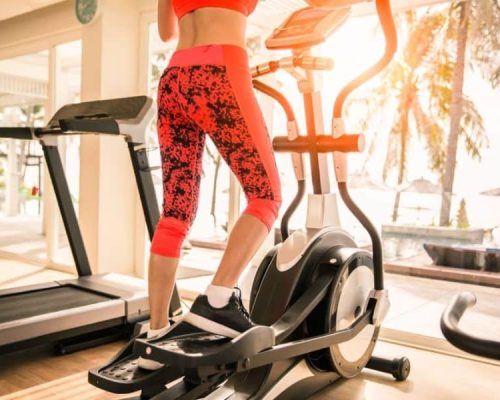Starting Your Walking Routine
Jumping into a walking routine for beginners is more than just hitting the streets; a pinch of preparation spices things up and makes every step count. Two biggies to nail beforehand? That’s right—getting warmed up and doing those pre-walk stretches.
Importance of Warming Up
Why warm up before you start your stroll? Well, it’s like the appetizer to your exercise entrée. Warming up brings your muscles and joints up to temperature, revs up blood circulation, and just makes the whole experience feel more comfortable and fun. Plus, it dodges that pesky injury bullet. Beginners, this is your golden ticket!
Perks of Warming Up:
- Toasty Muscles and Joints: Warmed-up muscles bend better and dodge strains like a pro.
- Boosted Blood Flow: Improved circulation means muscles get their oxygen fix, leaving fatigue in the dust.
- Bye-bye Injury Risks: Prepping your bod lets you sidestep sprains and all those nasty surprises.
Start at a chill pace and gradually speed up (Everyday Health). It gets your heart pumping and muscles ready to rock!
Effective Pre-Walk Stretching
Stretching before and after? It’s like giving your muscles a pep talk to keep injuries and soreness at bay (Arthritis Foundation). Dynamic stretches are your best buds here.
Dynamic Stretching Cheat Sheet:
| Stretch Type | What’s It All About |
|---|---|
| Leg Swings | Stand tall and swing one leg forward, then back. |
| Hip Circles | Stand firm and gently rotate those hips around. |
| Arm Circles | Stretch those arms out and make circles. Go big! |
These moves ramp up your flexibility and get you set for action.
Toss in a few minutes of these stretches, and your walking adventure becomes a whole lot better. Want more on acing your walks? Check out our guides on walking workout plans and walking for heart health.
Establishing Your Walking Technique
Want to make your strolls a real workout? Then let’s fix that walking style. You need to stand tall, move with pep, and lace up the right kicks.
Posture and Movement Tips
Standing tall and moving smart is what keeps your walking game strong. Proper posture not only saves you from mishaps but also makes you walk like a champ. Here’s how you can do it:
-
Posture: Look ahead, not at your feet. Keep that chin stable—don’t drop it. Let your shoulders relax, no hunchbacks here.
-
Arms: Bend them elbows at about 90 degrees. Swing ‘em naturally but with some oomph. It’s like they help push you forward.
-
Core: Tighten that tummy. Your core is like your walking anchor—keeps everything in balance.
-
Stride: No need for giant steps or baby ones. Just step naturally and roll your foot from heel to toe—easy as pie.
Mastering these steps makes a plain ol’ walk feel like a power-packed activity. For even more ways to stride right, check out how to start a walking routine.
Essential Walking Gear
Strap on the right stuff for max comfort and fewer boo-boos. Here’s your walking gear checklist:
-
Shoes: Don’t skip on comfy kicks. Look for ones that hug your arches and have a low heel to keep you moving forward (Everyday Health). If you’ve got creaky knees or a bad back, go for extra squishy soles.
-
Clothing: Slip into breezy, sweat-wicking threads that match the weather. Layer up if you’re shivering and slap on some glow-in-the-dark gear if you’re out when it’s dim.
-
Accessories:
- Activity Tracker or Pedometer: Whether you’re counting steps or measuring heartbeats, these gadgets let you peek at your own progress (Mayo Clinic).
- Water Bottle: Because being thirsty is the pits, especially after a few miles.
- Hat and Sunscreen: Nobody wants to look like a lobster. Guard yourself against the sun’s rays when walking under the big blue.
Stick with these essentials, and your walking efforts will feel like a breeze while keeping your fitness game on point.
| Essential Gear | Description |
|---|---|
| Shoes | Good arch support, lower heel, cushioning |
| Clothing | Comfortable, weather-appropriate, layers |
| Activity Tracker | Tracks steps, distance, heart rate |
| Water Bottle | Ensures hydration |
| Hat and Sunscreen | Protects from UV rays |
Wearing the right stuff can really change how you feel about your walks. Want more tips? Take a peek at walking workout plans and learn how fast to go at walking speed for cardio.
Building Your Walking Routine
Creating an effective walking routine can help you achieve your fitness goals, boost your health, and keep you motivated. Let’s chat about how you can get your sneakers moving.
Setting Achievable Goals
Setting targets that are realistic is the secret sauce to a successful walking routine. Start with aiming for around 30 minutes most days. That lines up with health guidance and brings the bonus of better heart health and fitness. If 30 minutes sounds like a marathon right now, ease into it and gradually add more time.
| Starting Goal | Duration (Minutes) | Frequency (Days/Week) |
|---|---|---|
| Initial Target | 10-15 | 3-5 |
| Intermediate Goal | 20-25 | 4-6 |
| Advanced Goal | 30+ | 5-7 |
Chunk it down with short and long-term goals. Maybe this week, it’s just 10 minutes a day. Down the road? Aiming for 60 minutes most days (Verywell Fit) sounds pretty good.
Tracking Your Progress
Keeping tabs on your progress keeps the spark alive. Here are some ways to measure your strides:
- Step Counters: A pedometer or app can check steps each day. Shoot for the magic number – 10,000 steps.
- Distance: Track how far you go. Apps like MapMyWalk are handy for this.
- Time: Log how long you’re at it. Aiming for a weekly total of 150 minutes of brisk walks isn’t a bad goal (Verywell Fit).
| Week | Steps Taken | Distance (Miles) | Total Time (Minutes) |
|---|---|---|---|
| 1 | 35,000 | 14 | 150 |
| 2 | 38,000 | 15 | 160 |
| 3 | 42,000 | 16.5 | 175 |
| 4 | 45,000 | 18 | 190 |
Keeping track helps keep you on course and gives you a boost when you see how far you’ve come. It nudges you to keep going for those new personal bests.
Want to amp up your game? Have a look at our tips on walking speed for cardio and walking for weight loss. They’re loaded with ideas to take your routine up a notch and tackle those health and fitness goals.
Health Benefits of Walking
Starting a walking routine for beginners can do wonders for your health. It’s one simple step that can lead to feeling much better physically and mentally.
Aerobic Benefits
When you walk regularly, there’s a world of good that happens to your body. Brisk walking gets your heart pumping harder, working out your heart and blood vessels. With every step, your stamina builds, and your energy levels climb higher. Keep up this healthy habit and your heart will thank you!
| Activity | Duration | Calories Burned (on average) |
|---|---|---|
| Walking (3.5 mph) | 30 min | 149 |
| Walking (4.0 mph) | 30 min | 167 |
| Walking (4.5 mph) | 30 min | 186 |
Curious to know how walking can ramp up your heart’s health? Be sure to check out our scoop on the cardio walking pace.
Heart Health and Calorie Burn
If you’re aiming to keep your heart happy, walking is your best buddy. It’s a fantastic way to burn off those extra calories and keep your weight in check—plus, it’s good for your bones and muscles too (Better Health Victoria). By spicing up your walks with a quick pace or uphill strides, you’ll be making your workout count even more.
To supercharge your routine, think about trying out indoor walking exercises or adding some resistance moves (GoodRx). These tweaks can take your fitness to a whole new level.
Want the full scoop on how walking can boost your heart health? Hop on over to our read on walking for heart health to find out more!
Walking Routine for Beginners
Ready to get moving? A regular walking routine is a simple way to shed pounds and boost your health. Here’s how to get rolling.
How Much and How Often
If you’re just starting, your aim should be to walk between 30 to 60 minutes daily. Consistency’s the trickery here. Kick off strong with three days a week, letting your body get used to the motion. Step up to 5 or 6 days weekly as your endurance grows.
| Week | Minutes per Walk | Days per Week |
|---|---|---|
| 1 | 20 | 3 |
| 2 | 25 | 3 |
| 3 | 30 | 4 |
| 4 | 35 | 4 |
| 5 | 40 | 5 |
| 6 | 45 | 5 |
| 7 | 50 | 6 |
| 8 | 60 | 6 |
Walking daily for 30 to 60 minutes not only creates a habit but also benefits your heart by boosting cardio health.
Curious about how walking zaps fat? Check out our guide on walking for fat loss.
Boosting the Intensity
Once you’ve nailed walking for 30 to 60 minutes injury-free, it’s time to up the challenge. Pump up the speed or extend the time, but not both at once. Slow and steady precludes injury.
Ways to Ramp It Up Safely:
- Pace and Speed: After mastering the duration, pick up the pace. Get your heart racing and boost the burn. For guidance, read our article on achieving the right cardio walking pace.
- Terrain Tactics: Mix it up with hills or trails to give new muscle groups a workout.
- Interval Intensity: Try switching between your usual pace and a more spirited one. For instance, walk briskly for two minutes then ease up for one.
Sample Interval Plan:
| Interval | Brisk Walk (minutes) | Regular Walk (minutes) |
|---|---|---|
| 1 | 2 | 1 |
| 2 | 2 | 1 |
| 3 | 2 | 1 |
| 4 | 2 | 1 |
| 5 | 2 | 1 |
Keep tabs on how your body feels. If things get tough, just chill and think about turning back. Chest pain or trouble breathing? Play it safe and get checked out.
By following these tips, you can safely boost your walking intensity and keep your spirits high. For extra tips, dive into our articles on walking for weight loss and walking workout plans.
Safety and Advanced Tips
Want to really step up your walking game? Let’s talk about keeping safe and getting more out of your hoofing efforts. Safety first, yes, but let’s also take this chance to pump up those walks for a healthier you.
Walking Safety Guidelines
Getting started on your walking adventure means keeping it safe to avoid any hiccups. Take a peek at these safety hacks:
- Stick to Sidewalks: When you can, stick to sidewalks so those drivers can spot ya. No sidewalks? Walk on the side of the road facing traffic. Stay safe out there!
- Cross like a Pro: Before you cross the street, look both ways like your mom taught you, and only cross at lights or stop signs. Make eye contact with drivers so you know they’re aware of you.
- Single File, Friend: If you find yourself walking roads with no sidewalks, keep it single file. It’s all about staying seen and not getting distracted.
- Light It Up: Wear bright colors during the day, and something reflective at night to make sure drivers can spot you a mile away—even just a block is enough though.
- Keep Your Head in the Game: Dial down the music so you don’t miss bike bells or others giving you a shout. Also, resist the urge to bury your nose in your phone while walking—stay alert!
Need more tips? Check out our full scoop on staying safe while walking.
Intensifying Your Walking Workout
Ready to turn up the volume on your strolls? Check out these tricks to crank your walks up to 11:
- Go the Extra Mile: Bit by bit, add more to your walks—both in minutes and days. Start out with 20-30 minutes, three or four days. Work your way up to an hour, five days a week.
| Week | Duration (Minutes) | Frequency (Days per Week) |
|---|---|---|
| 1-2 | 20 | 3 |
| 3-4 | 30 | 4 |
| 5-6 | 45 | 4 |
| 7-8 | 60 | 5 |
- Push the Pace: Walk faster till chatting gets a tad tricky. If you want to nail that cardio sweet spot, a fitness tracker could be your new best friend.
- Add Some Hills and Stairs: Tackle hills and stairs—your muscles will thank you for switching things up.
- Interval Action: Mix in short bursts of speed with your usual pace. This not only torches more calories but also perks up your heart health.
- Weight and See: Grab some light hand weights or wear a weight vest. It’s a sneaky way to build some muscle and bone strength too.
Looking for more ideas? Check out our guide on walking workouts for more awesome tips.
Keep those safety tips in mind and try these intensity boosters. Your walking routine will trim you down and crank up your health faster than you can say “power walk.”










